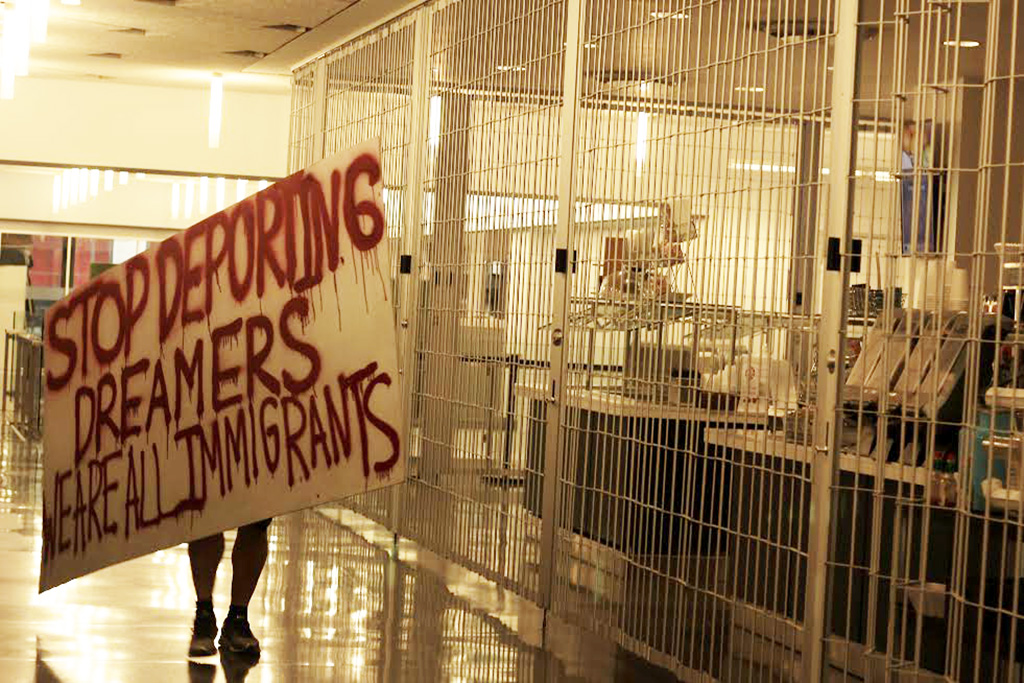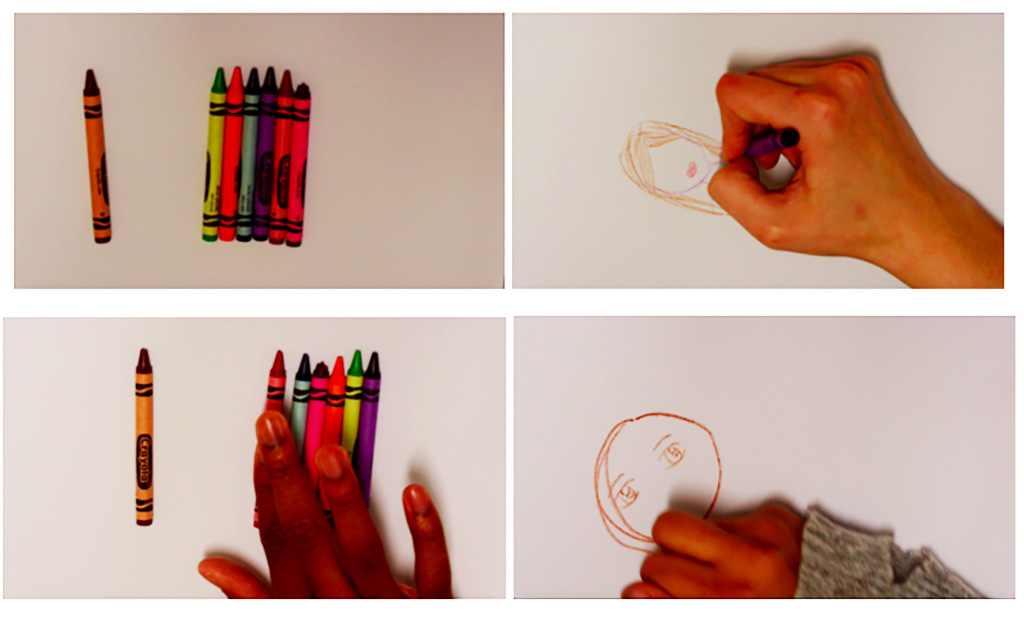Reflections on Privilege + Oppression
By Kris Derek Hechevarria

Students discussed how individuals can benefit from privileges, while simultaneously being a member of an oppressed group. We considered how the role of artist is a role of privilege, allowing us to create a space for people to reflect, respond, and react. For this socially engaged project, students created work reflecting on privilege and considered the perspectives of different oppressed groups.

Goals and Objectives
- To use art to make people think about their own privilege, and to to engage them in conversations about oppressed individuals.
- To help students understand the ways in which they are privileged, or not, and then to use that understanding to help others through artmaking.
Guiding questions
- In what ways are you privileged?
- In what ways are you oppressed?
- How can you use your privilege to assist others?
- Why is it important to view the world from the perspective of others?
Documentation + Assessment
- Students responded to questions on Edmodo throughout the unit, asked follow-up questions, responded to readings, and wrote a project proposal and final artist statement.
- For the critique students had to write an artist’s statement and create a one-page handout describing their project. They presented their project to the critique panel and participated in follow up discussion.
Timeframe + Learning Activities
Timeframe
- Museum Visit
- One week of Discussion, Activities, and Readings
- Two weeks of Work Days
- Critique Day
Learning Activities
- Visit the MCA Chicago. Students participate in conversations about the Stan Douglas and John Preus installations.
- Class discussion of artists, videos, and popular culture that engage with a dialogue about privilege.
- Prompt a discussion about intersectionality by making a list of ways an individual is privileged and then a list of ways they are oppressed.
- Ball throwing activity: Each student was given a ball of paper, lined up, and told that they had to throw the ball into the thrash can to receive a prize.
- Follow up on this activity with a discussion of how the activity is a manifestation of privilege.
- Read Pablo Helguera’s Education for Socially Engaged Art
- Read Peggy McIntosh’s "White Privilege: Unpacking the Invisible Knapsack"
- Prompt: Consider one of your privileged identities — How do you benefit from it?
- Critique: The critique panel consisted of Wolcott School faculty members who pretended to be faculty from other schools. Students had to present their work, justify why these projects matter, and explain why the “visiting” faculty should implement these projects in their own schools.

Materials
- Computer, projector, whiteboard, markers
- Material listed by students in their project proposals
MCA Connections
Our first stop at the museum was the installation Da Dee Dee Da Dum De Profundis by John Preus. We discussed the closing of neighborhood schools, typically associated with lower socio-economic classes, and compared this to their attendance at a private school that sent them on a field trip to the MCA Chicago in a chartered Uber Black car. This left students feeling appreciative that they are in a school that focuses on their specific learning needs and how their needs were neglected at their previous schools.
After going through the Freedom Principle exhibit, we stepped into the video installation Hors-Champ by Stan Douglas. After viewing the entirety of the video we discussed the work and specifically how we experienced it. The installation includes two different scenes on either side of a divider. We asked: What inspired you to look at the other side? How did you realize that both sides are different? Which side did you settle on? Were you actively looking from both perspectives?
References + Resources
- Mister Rogers
- Wednesday Adams, Burn Your Village to the Ground
- Tribe Called Red, Burn Your Village to the Ground
- Peggy McIntosh, "White Privilege: Unpacking the Invisible Knapsack"
- Pablo Helguera, Education for Socially Engaged Art
Kris Derek Hechevarria
Wolcott School
Kris Derek Hechevarria received a Bachelor's degree in Art History and Women’s Studies from the University of South Florida, and a Master of Art in Art Education, with a concentration in Museum Education, from the School of the Art Institute of Chicago. He has taught at Pritzker College Prep, where he developed Pop Culture & You and Art Enrichment, and is in his second year at Wolcott School, where he designed curriculum for Art and Visual Culture. His interest in interpretation lead him to collaborate and create mp3s in the museum, a non-museum specific museum audio guide, and to establish Step Back and Squint, an experiment with personal and digital interpretation. In the summer of 2015 he piloted coMONICArte, a youth program to activate and respond to the Museo de Arte Religioso Ex Convento Santa Monica in Puebla Mexico.
Hechevarria has worked with the Museum of Contemporary Art Chicago, the Art Institute of Chicago, the Smart Museum, the Contemporary Art Museum — Tampa, the National Veterans Art Museum and the National Museum of Mexican Art.
Kris reflects on his process:
This project prompted students to make a socially engaged artwork after they viewed the works of many socially engaged artists, read Pablo Heguera’s work, and discussed concepts of privilege and oppression. This project allowed students a space to confront their privilege and utilize their power to address a social issue. Students created the direction and forms of the projects. They found an issue that they wanted to investigate and and decided how to best engage others in conversation about that issue. One powerful moment in a simple collective ball-throwing activity came when students asked to do another round. In this round, students revised their approach to help each other by having the person in the front collect the balls to shoot for everyone. This prompted a discussion about how to use your own privilege to help others. After this project, one student reflected: “I've taken away from these discussions that there is a lot of inequality in the world, and recognizing your set of privileges is very important if we want to make progress.” This project was moving and empowering, but not without its struggles as well. An affluent, straight, white male student was initially resistant to approaching this project. After our reading of Peggy McIntosh, he had a hard time figuring out what to do. We had to discuss that his privilege is not his fault, and that the fact that he has such feelings means that he is a poised to make a difference. This student also has a processing disorder and struggles with broad or vague prompts. We used different ways of brainstorming, such as idea mapping, dialogues, and stream of consciousness writing, to help him move forward.